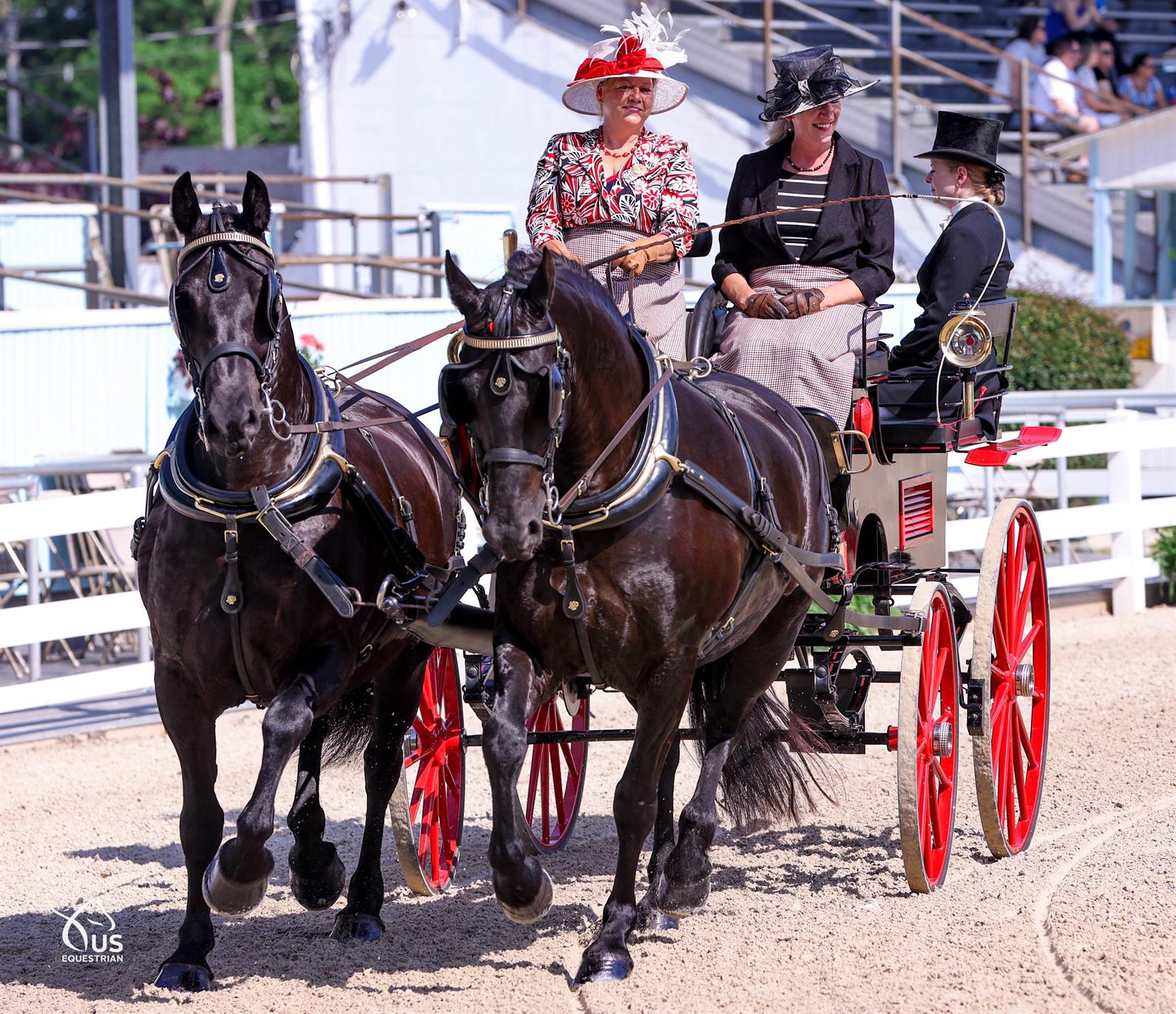Suzy Stafford is a world champion driver and full-time trainer and coach, competing in both pleasure showing and combined driving since 2001. She has served as the Singles Coach for the Land Rover US Driving Team and currently runs Stafford Carriage Driving in Franklinville, NJ. and Ocala, Fla.
“I have been on the US equestrian team as an individual and as a team member since 2015,” Stafford said. “I've been in the sport for quite some time as a professional and travel the country competing and teaching.”

- The sport focuses on elegance and tradition.
The judging sheet for USEF’s Carriage Pleasure Driving Intermediate Level Driven Dressage Test emphasizes “calm, prompt responses to the aids” as well as “straightness, balance, transition, [and] immobility.” However, the horses are not the only pleasure driving competitors presenting a sophisticated appearance in competition.
“You wear big fancy hats, and you dress quite elegant that way, with jackets and traditional appointments, aprons, gloves,” Stafford said.
The drivers’ dress is not the only traditional aspect of carriage pleasure driving; the carriages used are often antique vehicles built in the 19th century.
Because of this longstanding tradition, Stafford said the most important component of carriage pleasure driving is a relaxed, happy partnership with the horse.
“I would say the partnership between the horse and the driver [shows] off the hard work that everybody puts into not only their horse’s training, but their equipment.”
- Safety is the first topic addressed in a driving lesson.
“There are a lot of dos and don'ts that go into safely hooking and unhooking a carriage and proper equipment,” Stafford said. “I would say people that have not had any experience with horses have an idea that it's like driving a car. They quickly learn that there is much more involved than just pulling left, right, and backwards to maneuver the horse around or get it to do what you want.”
Stafford also highlighted the necessity of properly introducing new drivers to carriage equipment.
“The most surprising [thing is] the complication of the equipment--the things you have to remember to attach and unattach the horse to the carriage,” she said.
- You might start out in a ride/drive-along.
“What a lot of people like to do…if they want to get a sense of whether they're interested in picking up carriage driving, they'll find someone that does it for a living and just come and sit with them for an hour or two and sit along in the carriage while they train or drive another horse,” Stafford said. “Or they find a friend that is already involved, and they go and spend the day on the carriage and watching the person hook and unhook the equipment and take care of the horse and so.”
Once new drivers become more familiar with driving equipment, they progress to minor rein handling with a horse, learning how to steer and stop the carriage.

“Obviously, you would need something that was extremely broke and safe, just like you would under saddle,” Stafford said.
Stafford also explained that new drivers who have previous riding experience are often thrown off by the fact that driving involves less direct contact with the horse.
“Instead of sitting on the horse, the only feel that you have with the horse is through the reins, so sometimes that's a little surprising or a little bit hard to adjust to,” Stafford said.
- Subtle hand motion is key to controlling your carriage and horses.
“Because we don't have a seat or leg to maneuver the horse around, your rein handling or your hand or arm or finger aides are much more precise and much more subtle than they would be under a saddle,” Stafford said. “It takes a little bit of time to go through the motions of whether you use your fingers, whether you use your elbow, or whether you use both.”
- There are multiple different ways to guide a horse, and the preferred method varies from horse to horse.
“Your three main aids for carriage driving…are your reins, your whip, and your voice. Being able to utilize those three aids in a productive way sometimes takes a little bit of time to learn,” Stafford said.
Stafford explained that certain horses are trained to be more responsive to particular aids.
“Your voice aid can be very different from one horse to the other, depending on who trained it and what cues they used,” Stafford said. “And then, of course, you have your whip aid. Some horses are trained to be very responsive to the whip, and some horses are not trained to utilize the whip at all, so just managing the whip is also something that takes quite a bit of time.
For more information, visit the Carriage Pleasure Driving page and video in USEF’s Learning Center; scroll over the Compete tab and click Breeds & Disciplines.


